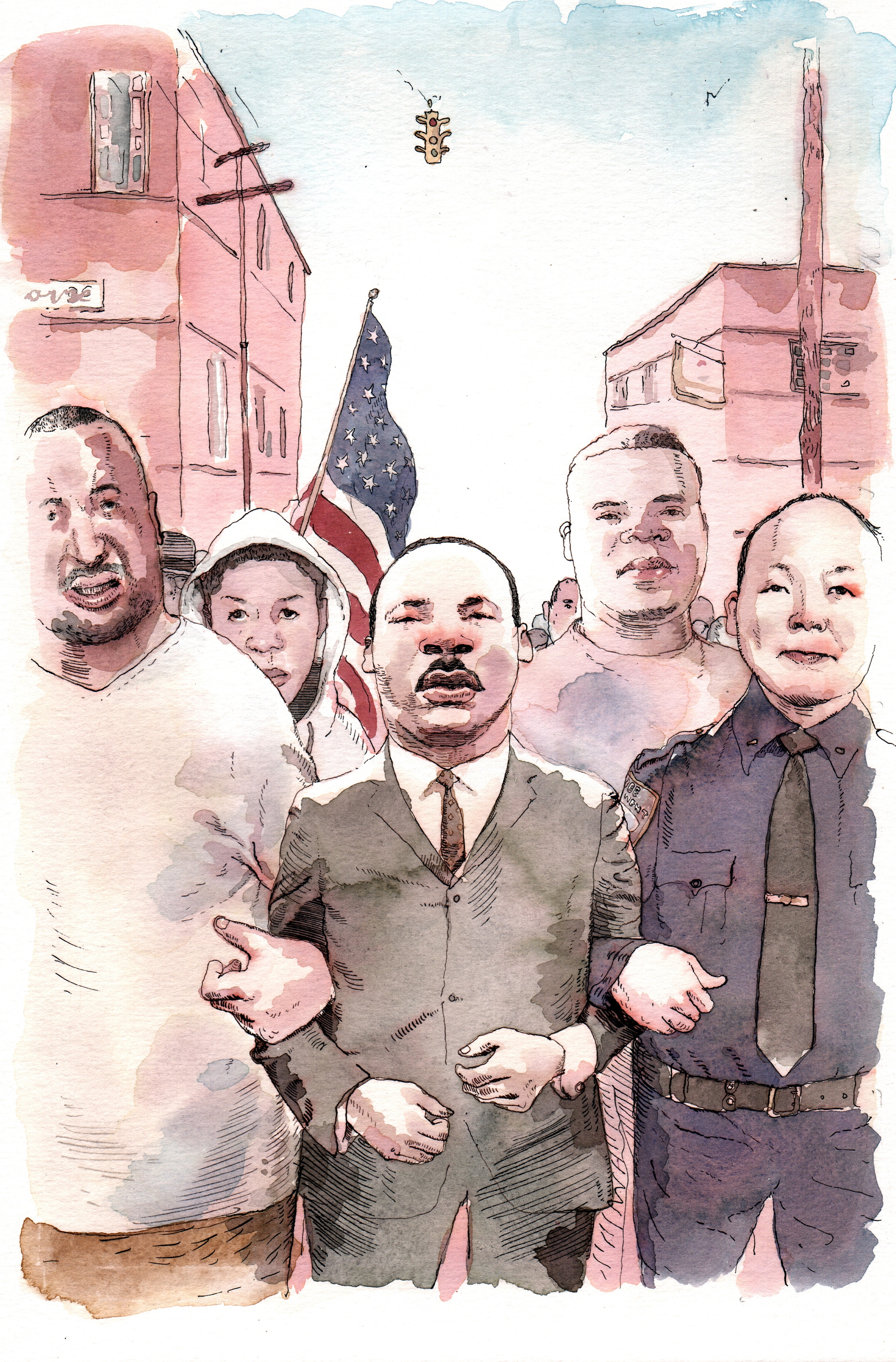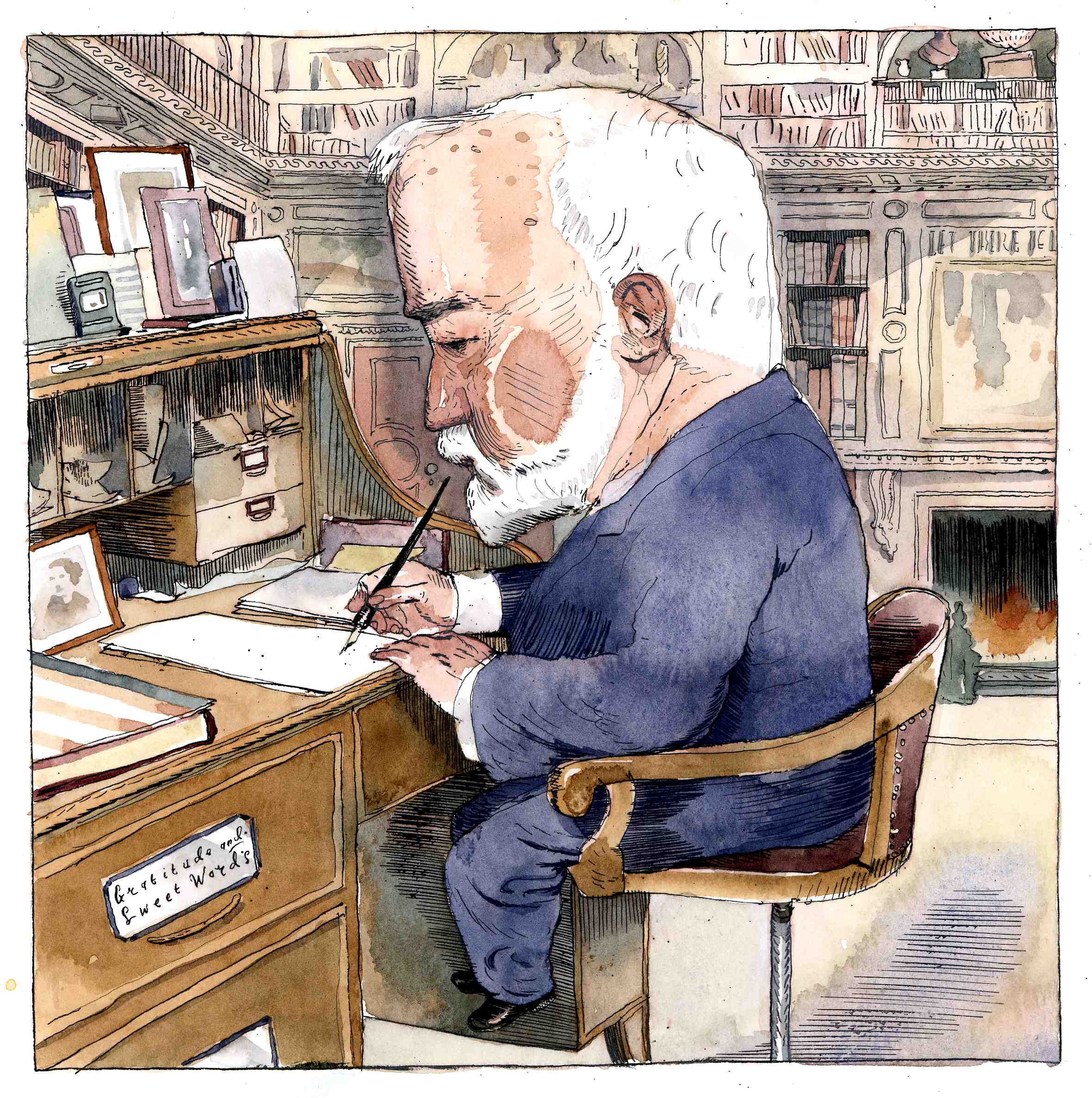

This interview has been in the works since the January of this year and I couldn’t be more excited to be sharing it with all of you. Finally!
Barry Blitt is perhaps best known for his amazing New Yorker covers. In addition to many other things he’s also worked on Vanity Fair, Rolling Stone, The Atlantic and helped with the iconic Saturday Night Live cartoon TV Funhouse (which gave him a page on the IMDb).
Barry was nice enough to answer a few questions about how he began with art, who has influenced him along the way, and his experiences working on the New Yorker, so let’s get right into the interview.
How did you get started with art and, in particular, watercolor?
I got started with art like all kids did — scribbling as a small child. I liked drawing cartoon characters; Popeye particularly. And copying caricatures from Mad magazine. And my grandfather was an amateur oil painter — he liked to copy Norman Rockwell pictures. He was particularly encouraging to me, and I guess the positive reenforcement kept me at it. I don’t believe I got into watercolor until I saw Bruce Stark’s great, colorful sport caricatures — I was 14 or 15, and drawing a lot of hockey players [I’m Canadian, and what else was I going to do but draw hockey players?] and his work inspired me to try and mess with a winsor newton pan set. [not entirely convincingly, of course]

How may your tools have changed from the beginning?
Somewhere along the way I became a pen and ink man. It’s definitely a love/hate relationship, there are plenty of days when I go through countless nibs [and curse each one of them]. I drew photo-realistically, in pencil, before I stumbled into pen and ink, which I find match the spontaneous, cranky tone of my work better than the subtle pencil shading of 6B pencils. And of course, coloring in my images with watercolor, that’s a pleasure. Once the line work had been put down, even a tight pen drawing can be loosened up somewhat with some watercolor that doesn’t stay inside the lines.
[actually, another trick I like is to mix the india ink I’m dipping my pen into with some non-waterproof colored ink – say, sepia or red, etc. When it’s time to lay down a wash over the drawing, the line will bleed a little. It’s a nice effect [if you don’t let it get too sloppy].]
I first saw your work on the New Yorker. What has your experience been like to work with the New Yorker and did you always know you’d be doing this sort of work for a living?
Working with the New Yorker has been a great experience. I’m encouraged to come up with ideas of my own, and the art people I work with — Francoise Mouly, who edits covers, and Chris Curry, who handles interior illustration, are inspiring and smart. I didn’t always know I’d be doing this sort of work for a living, god no. And I’m still expecting someone who looks like they’re in charge to walk into the room at any moment and tell me to stop, I’ve had my chance, the fun is over.

Which artists have been the most influential to you and have you stumbled across anyone new lately that you’d like to share?
I mentioned Bruce Stark. Later, I became very influenced by the work of the great Edward Sorel. And Alan E Cober as well. I’ve also been very lucky to have a circle of friends whose work inspires me all the time – artist like Joe Ciardiello and John Cuneo, Tim Bowers, Rob Shepperson. Great people, and nice to talk shop with.
Aside from watercolor and art, what other hobbies do you have?
Hobbies? Well, when I’ve applied a swath of watercolor to a page, and it’s going to take a little while to dry, I’ll often run over to the electric piano and pound out some chords. A lot of illustrators and cartoonists are amateur musicians, and it’s not hard to see why: the immediate gratification and improvisational fun found in making jazz or popular music is a nice antidote to the patience it takes to execute an image that tells a story in an exacting technique like watercolor.
Thanks to Barry for taking time out of his busy schedule to share with us.
Be sure to check out his web site, his contributions to the New Yorker, or his interview with none other than Terry Gross of Fresh Air.
